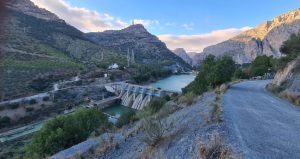Council allows new exemptions Water Framework Directive

-
 Esther Rasenberg
Esther Rasenberg
Share article:
The Council proposes exemptions for the Water Framework Directive in Brussels on the 19th of June. When adopted by the European Parliament short-term negative impacts on water bodies and deterioration in water quality following water or sediment relocation, will no longer be considered as deterioration of waterbodies.
The Council now will start talks with the new European Parliament on the final text of the new rules. The proposal to adopt exemptions for the Water Framework Directive were pushed by the Netherlands, Germany, Denmark, Finland and Luxembourg. Environmental organisations are disappointed. According to them Europe fails to respond adequately to Europe’s pressing water and biodiversity crises.
One-out-all-out principle
The current Water Framework Directive (WFD) uses the one-out-all-out principle. This means that all ecological and chemical indicators should meet the standards. The water quality is assessed as insufficient if only one parameter does not comply with the standards. According to the Member States this principle makes it difficult to show overall progress. They now agreed that the European Commission will set indicators to measure progress in a uniform way, also in situations where not all quality standards are at good status.
New strategy
In 2022 the European Commission said that there were no plans postponing the deadline or making legislative changes for achieving the WFD targets. “The Water Framework Directive is meeting its objectives and no legislative changes are planned to extend the existing deadlines,” stated an official spokesperson for the European Commission back then. All of Europe’s lakes, rivers, estuaries and coastal waters had to comply with a minimum ‘good’ or ‘high’ ecological status in 2027.
New monitoring techniques allowed
The Council also provides for intermediate reporting, new monitoring techniques, including remote sensing, and the possibility to set up an EU-wide monitoring facility to help Member States with their tasks. Besides that a mandatory ‘watch list mechanism’ for groundwater similar to the already existing one for surface water is introduced. The Council clarified that microplastics and anti-microbial resistance genes will be included in the watch list only once harmonised monitoring and evaluation standards are in place.
Extended deadline for groundwater pollutants
The Council agreed to narrow down the scope and sets EU-wide values only for synthetic substances. Member States will have until 2039 to achieve good groundwater chemical status. As groundwater is the main source for drinking water in many member states, the negotiating mandate aligns the PFAS requirement for groundwater with the drinking water directive, which sets quality standards for 20 PFAS. It also includes quality standards for the four most problematic PFAS.
Easier to meet WFD requirements
In the latest review of Europe’s lakes, rivers, estuaries and coastal waters complied with a minimum ‘good’ or ‘high’ ecological status. A vast majority of Europe’s water bodies still fails to meet the European Union’s objectives of the Water Framework Directive. This showed the European Environment Agency ‘state of water’ report published the 3rd of July 2022. This report showed the improvement of European waters came to a standstill. It became obvious more effort is needed to address the delay in meeting the WFD requirements. Lowering targets will help Member States to meet their obligations.


















